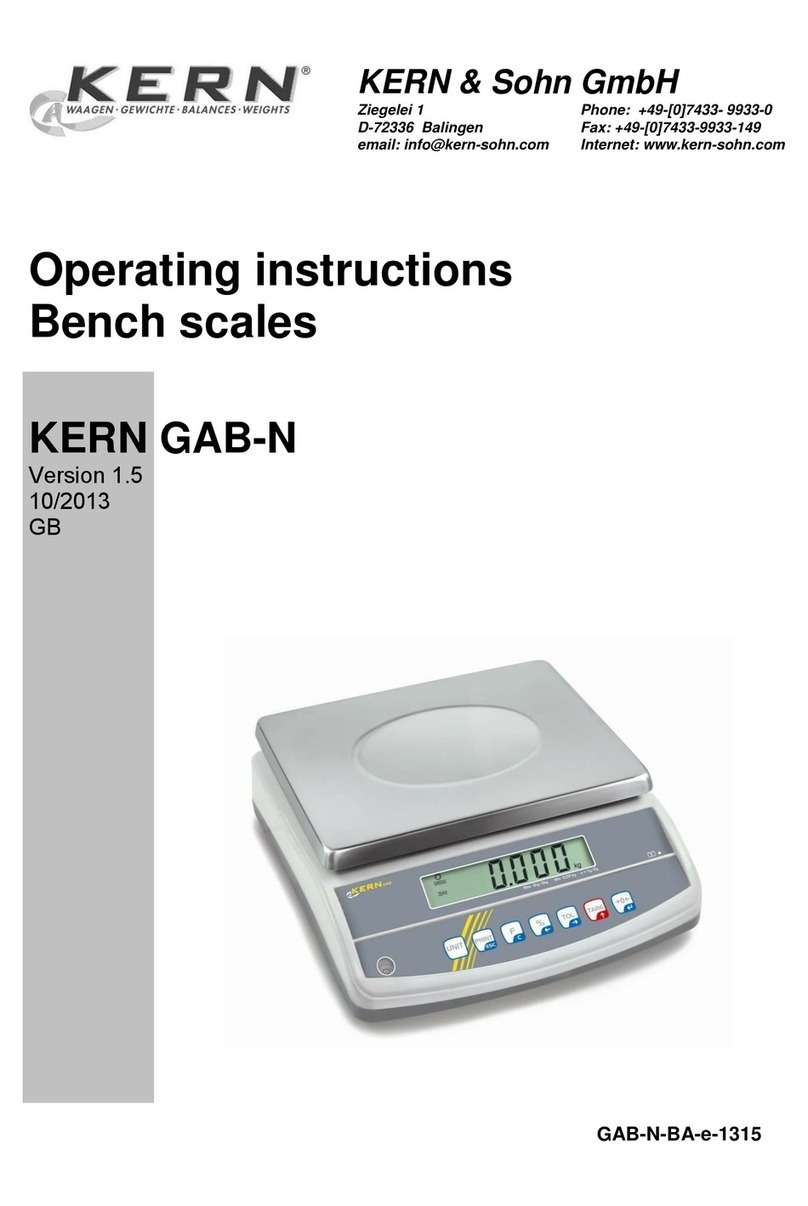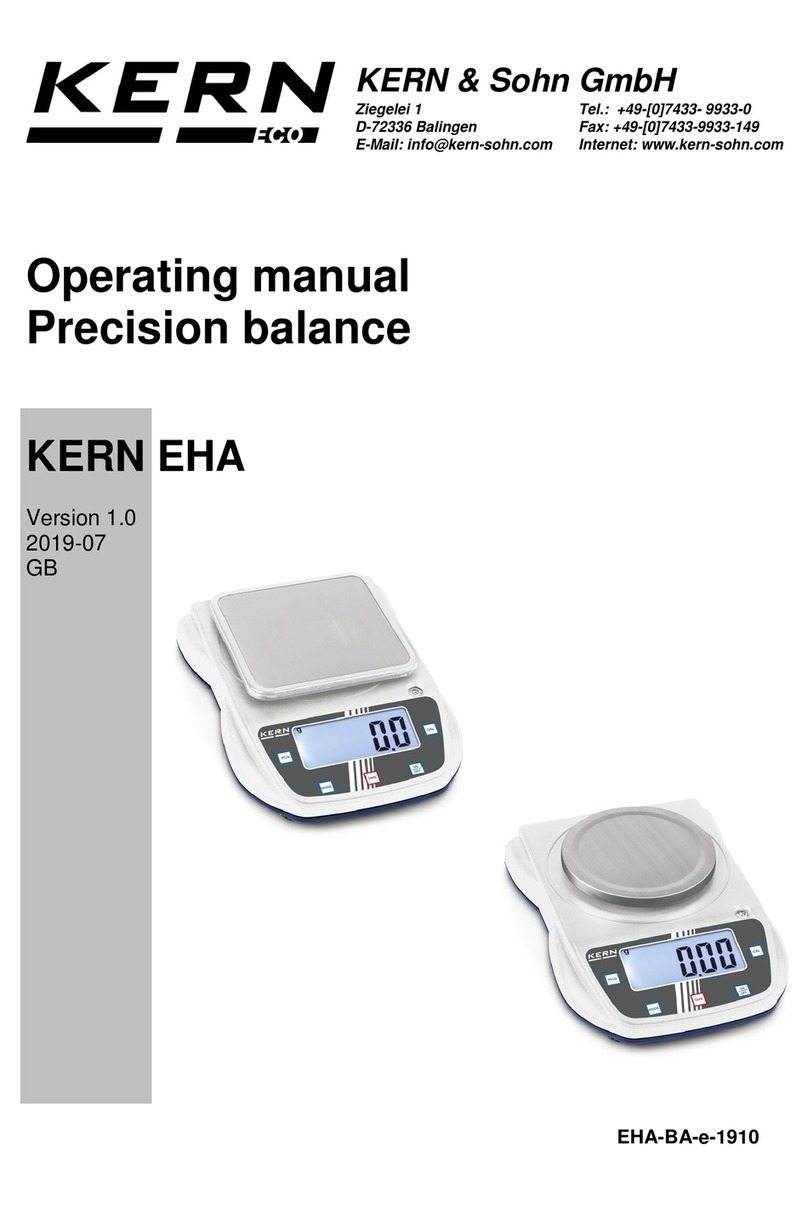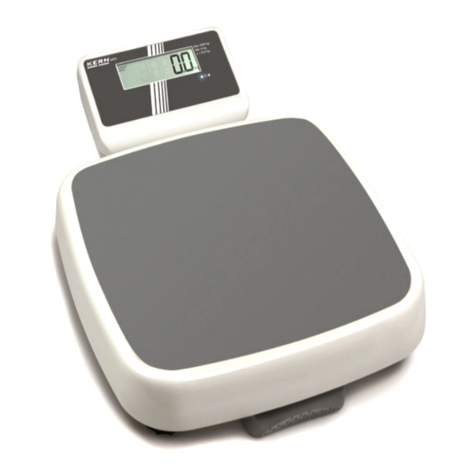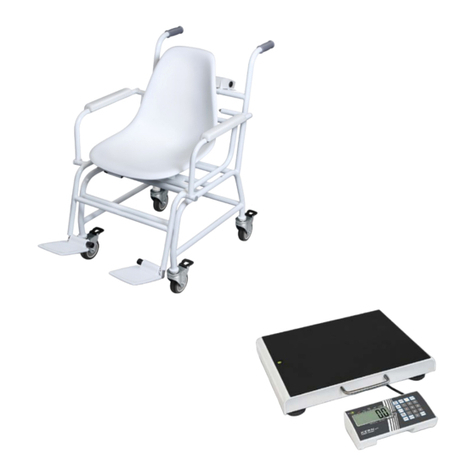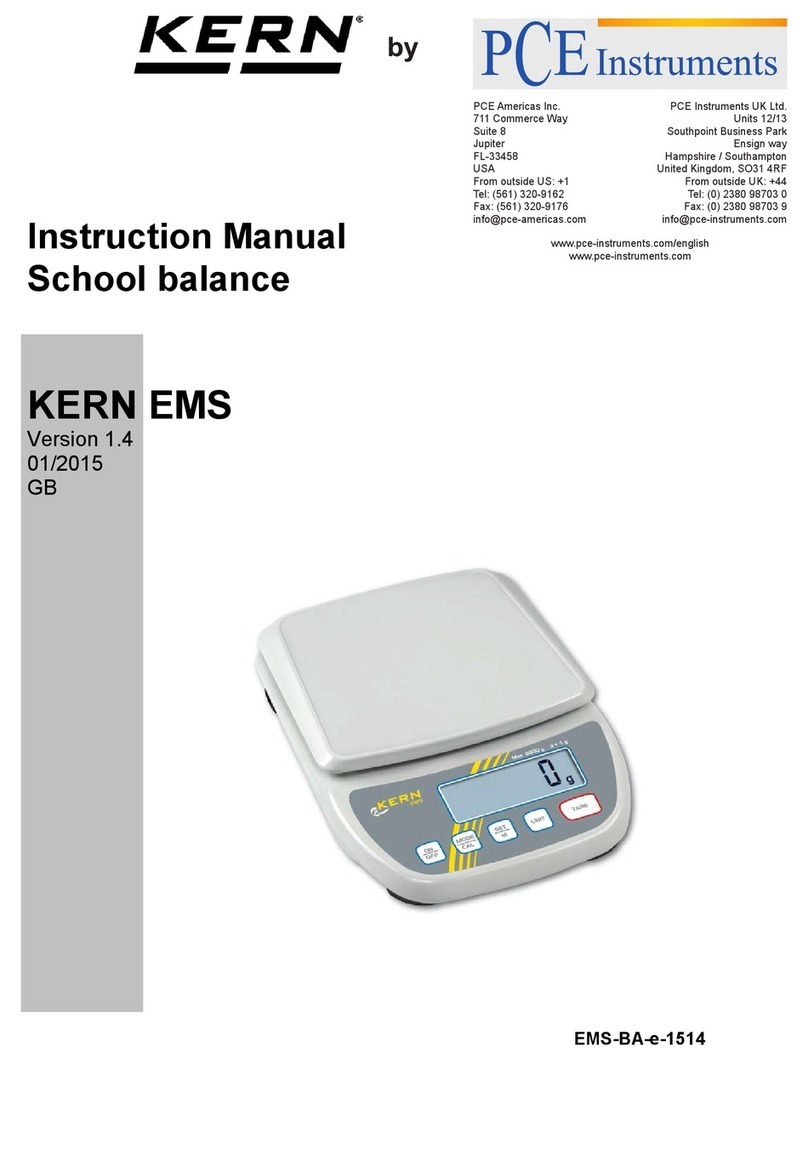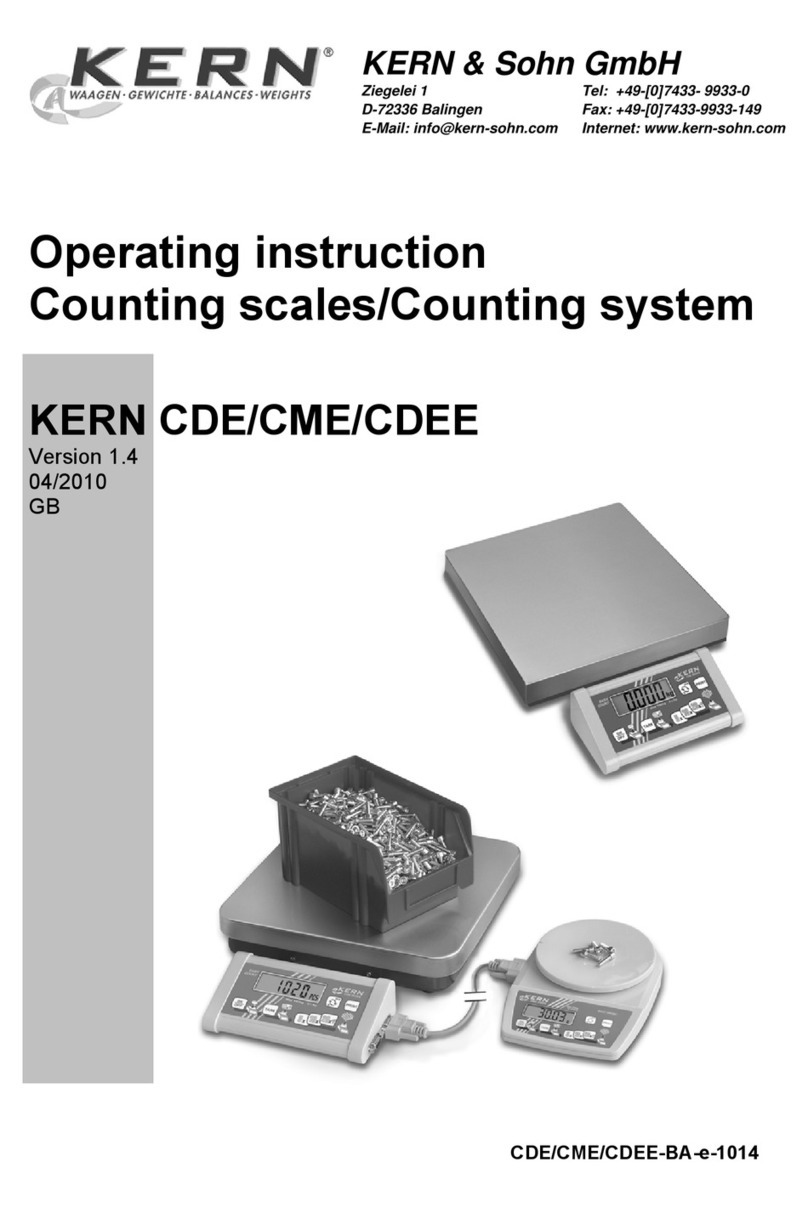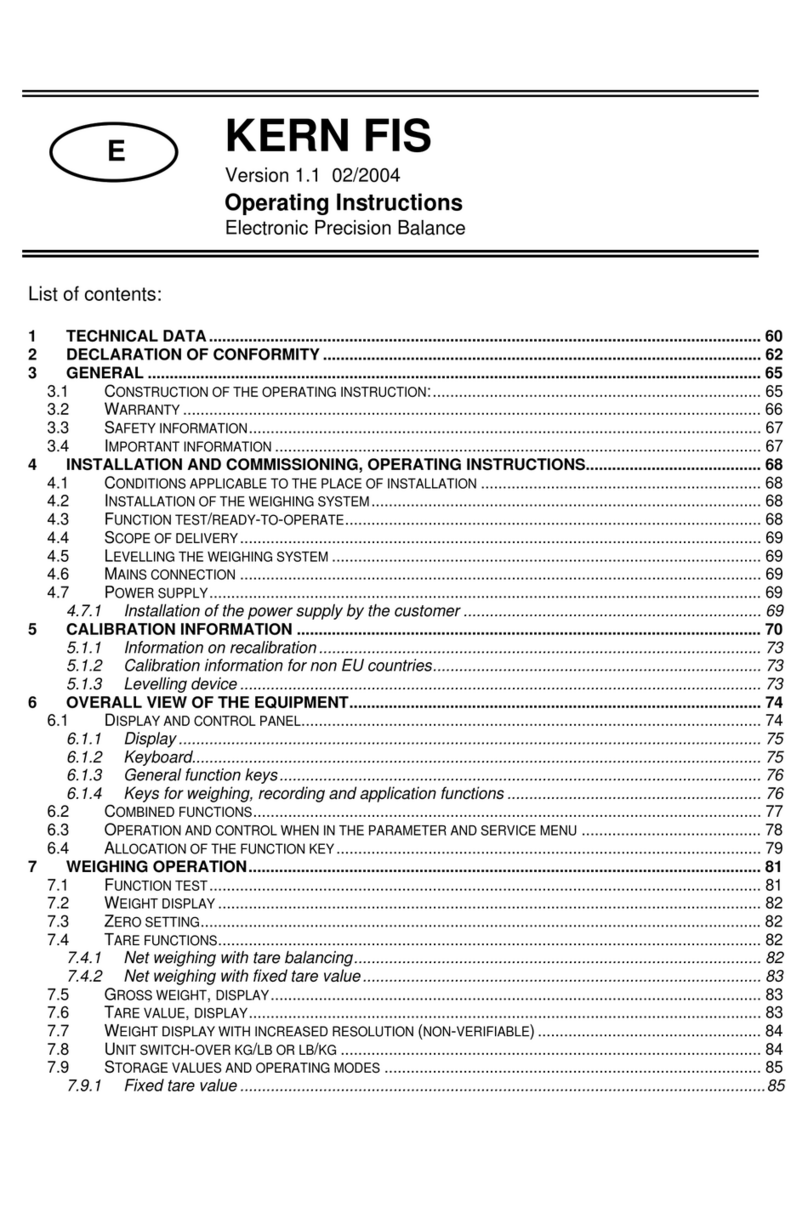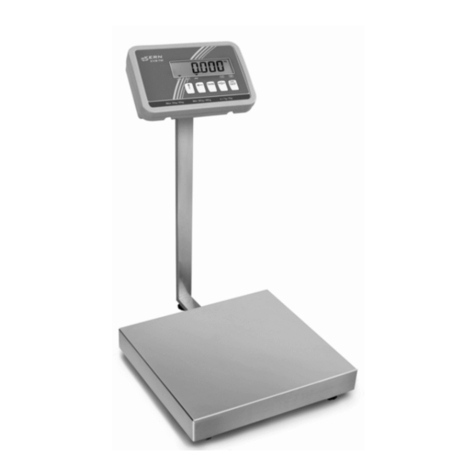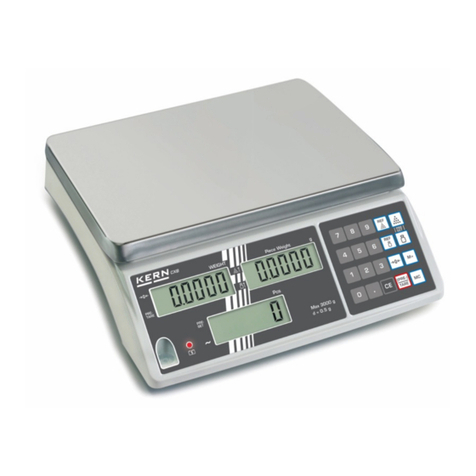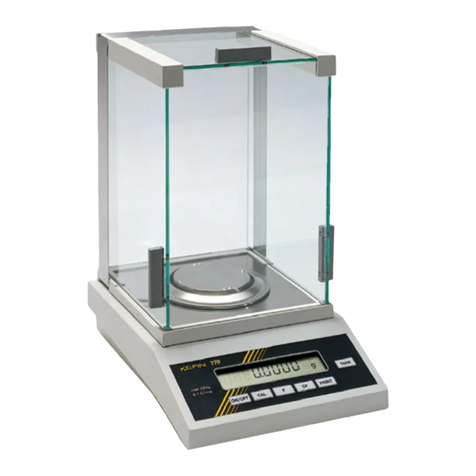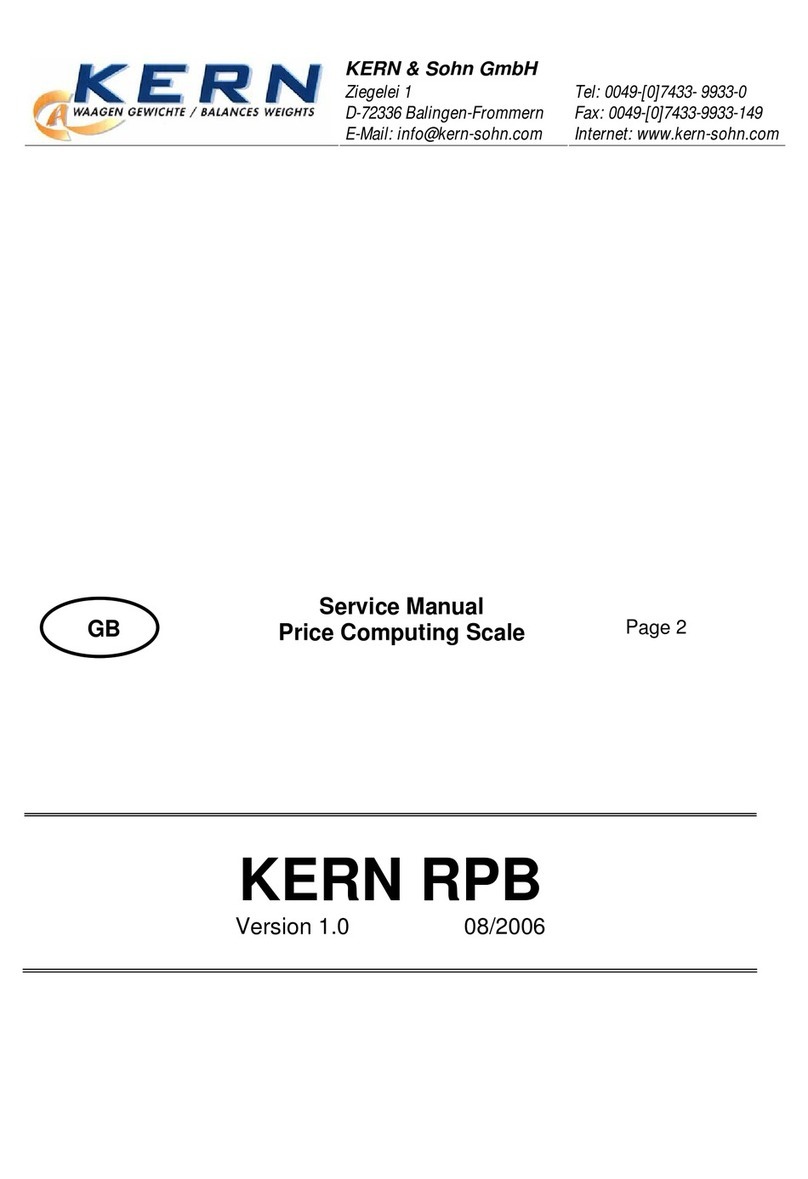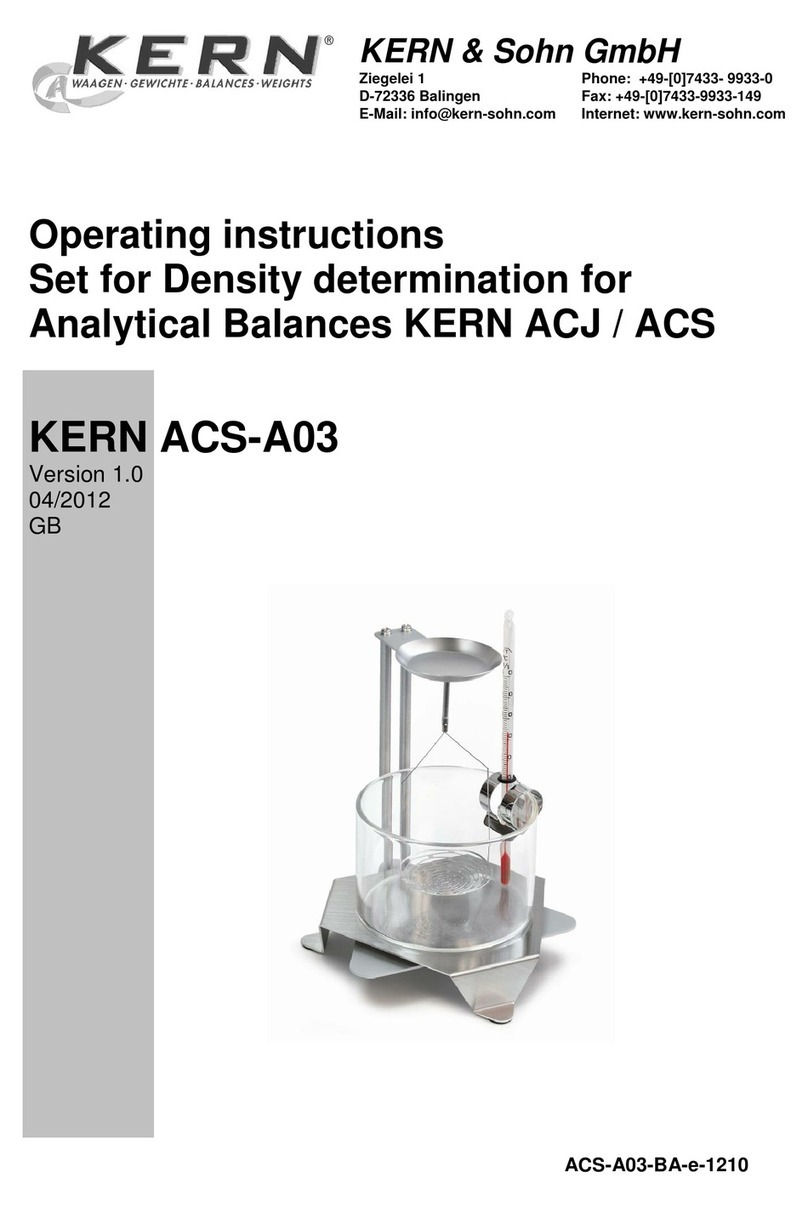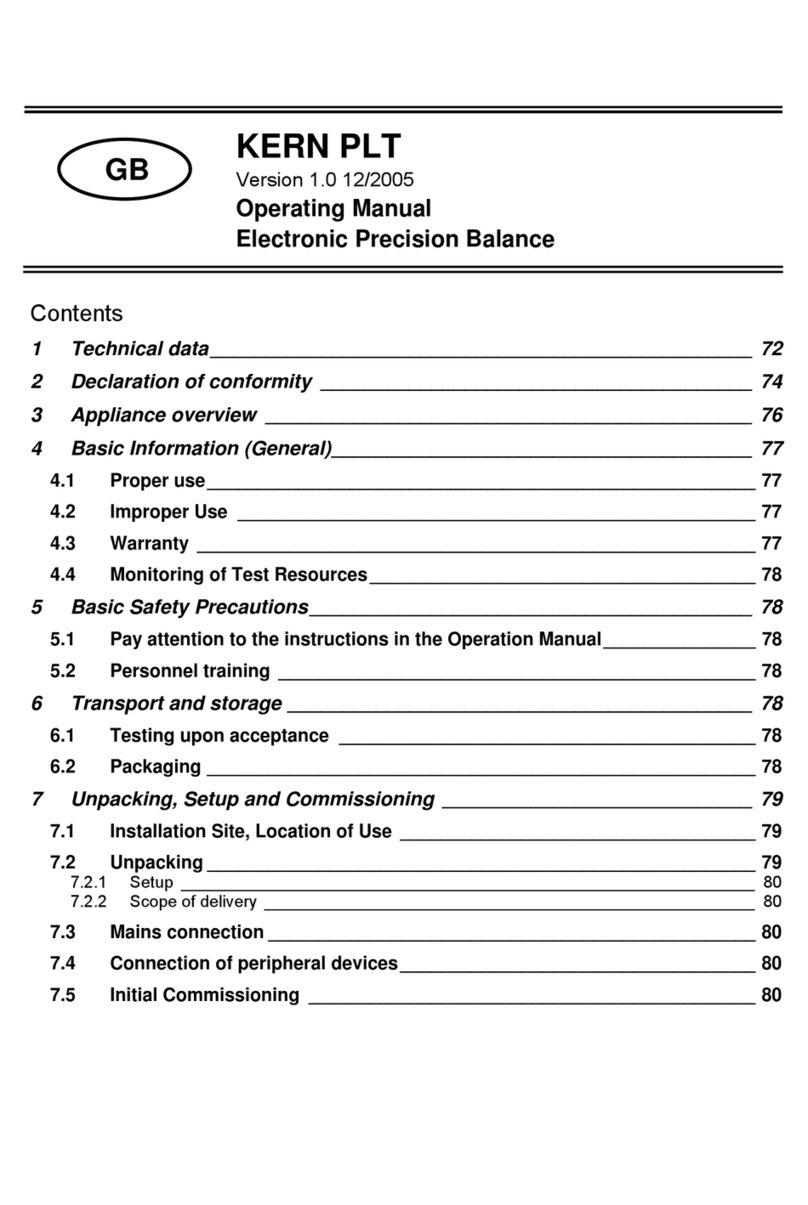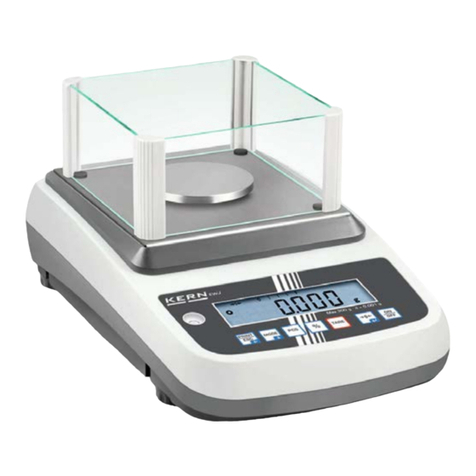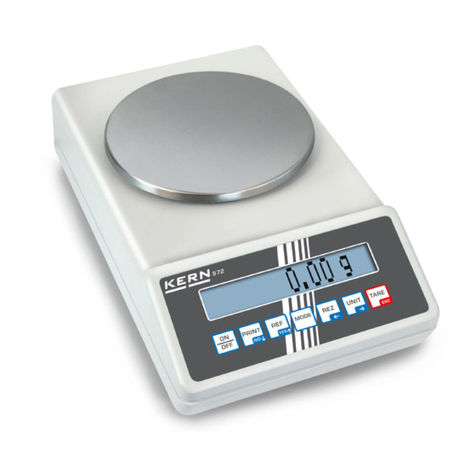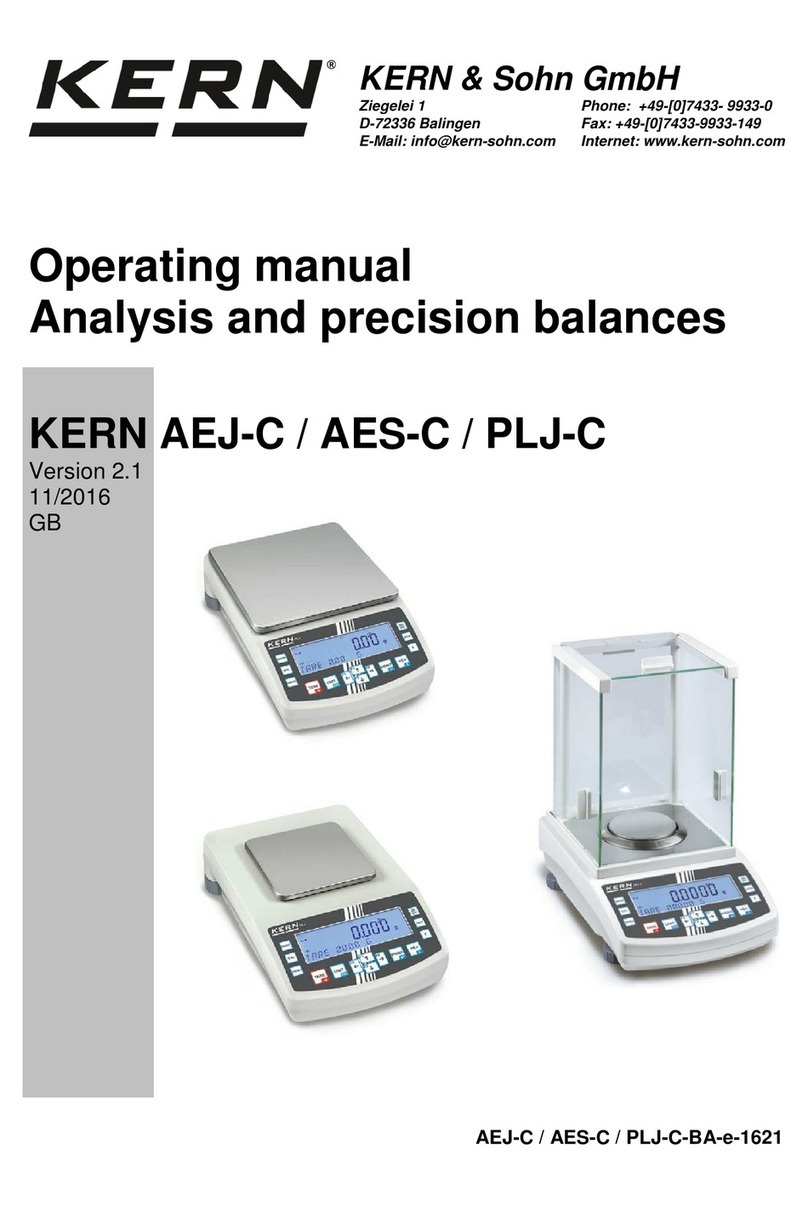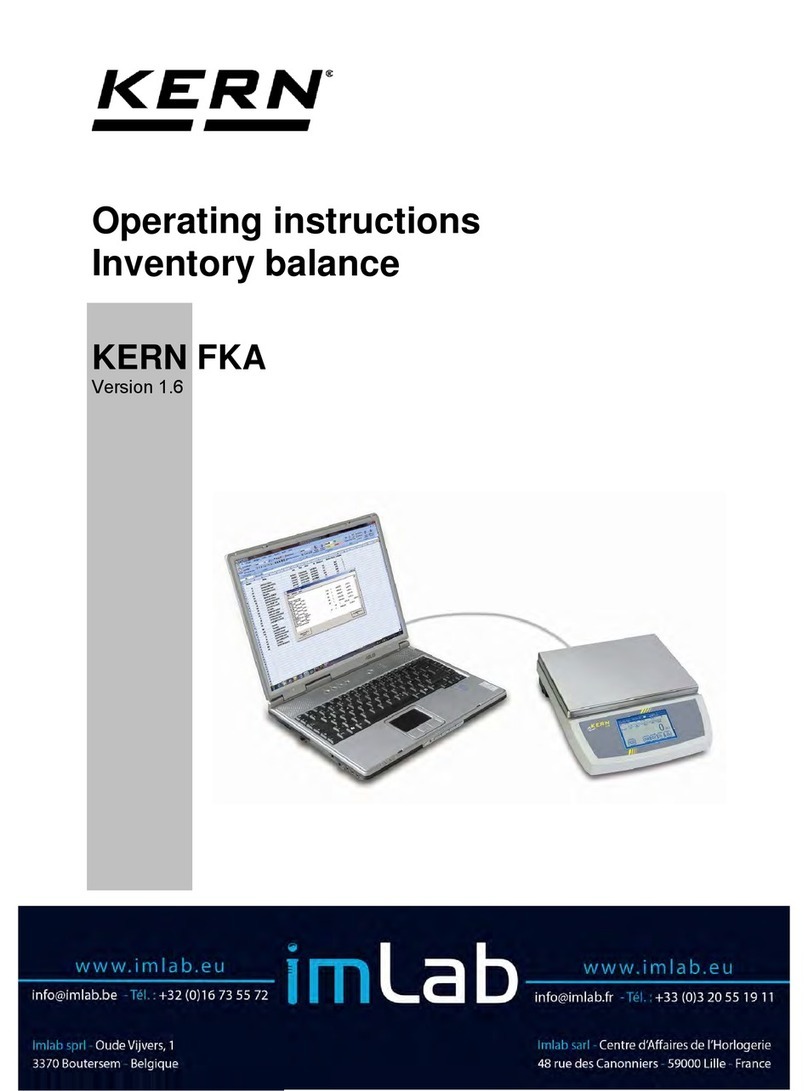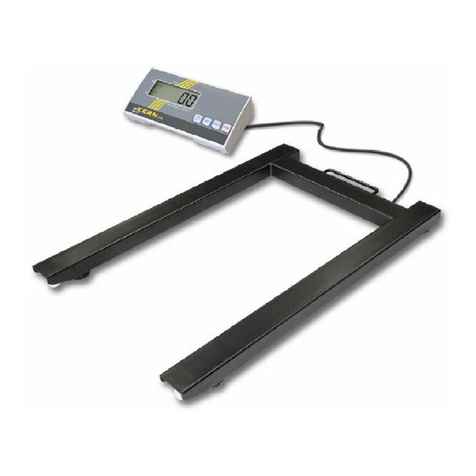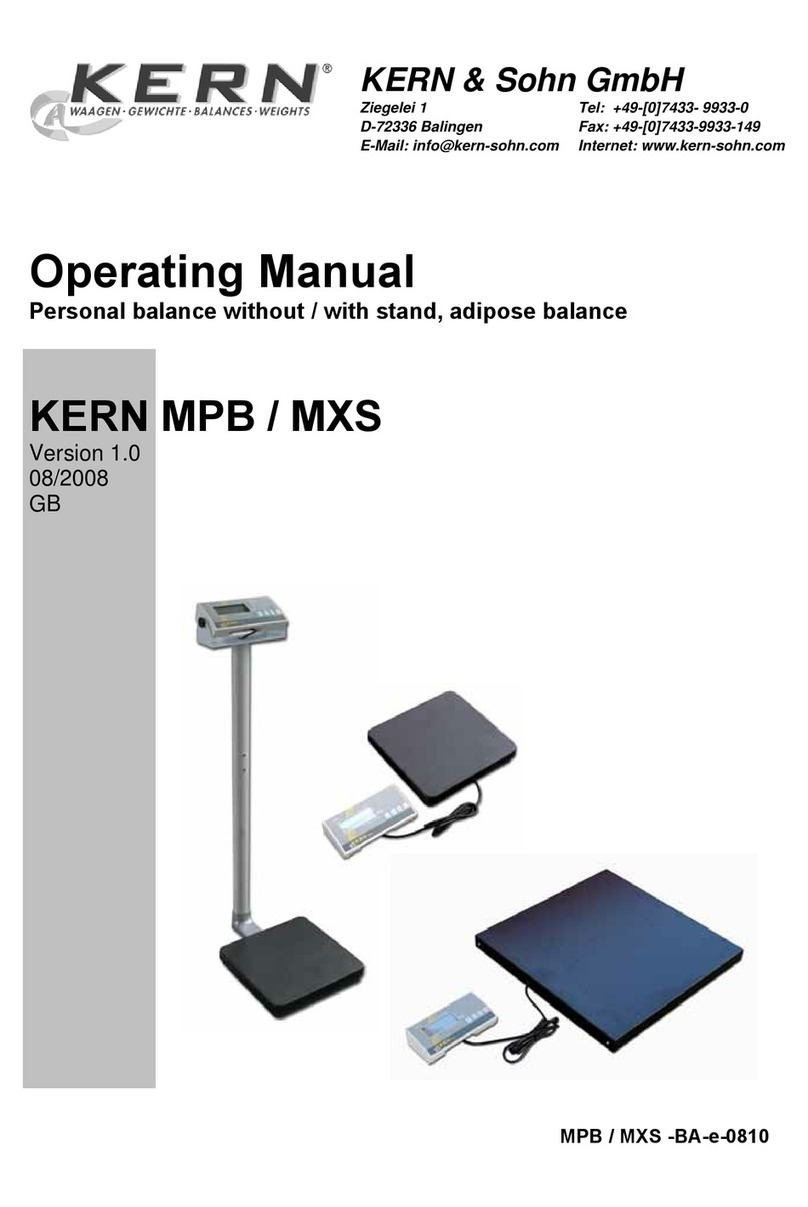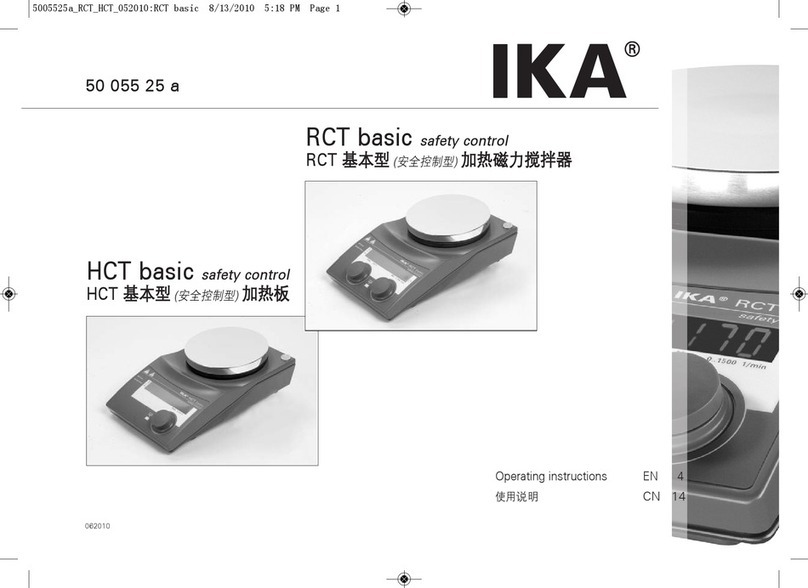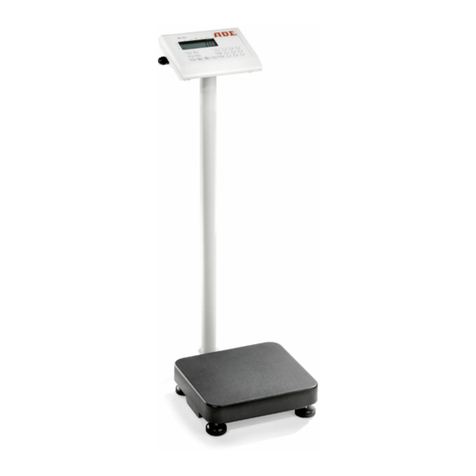Table of Contents
1MODE – MENU .......................................................................................................3
2Technical Data .......................................................................................................4
2.1 KERN CKE.......................................................................................................................................... 4
2.2 KERN CDS.......................................................................................................................................... 7
3Basic Information (General)..................................................................................9
3.1 Proper use........................................................................................................................................... 9
3.2 Improper Use ...................................................................................................................................... 9
3.3 Warranty.............................................................................................................................................. 9
3.4 Monitoring of Test Resources............................................................................................................. 9
4Basic Safety Precautions....................................................................................10
4.1 Pay attention to the instructions in the Operation Manual................................................................. 10
4.2 Personnel training ............................................................................................................................. 10
5Transport and storage.........................................................................................10
5.1 Testing upon acceptance.................................................................................................................. 10
5.2 Packaging / return transport.............................................................................................................. 10
6Unpacking, Setup and Commissioning.............................................................11
6.1 Installation Site, Location of Use....................................................................................................... 11
6.2 Unpacking......................................................................................................................................... 11
6.2.1 Placing .............................................................................................................................................. 11
6.3 Mains connection.............................................................................................................................. 11
6.4 Battery operation CKE....................................................................................................................... 12
6.5 Connection of peripheral devices...................................................................................................... 12
6.6 Initial Commissioning........................................................................................................................ 12
6.7 Adjustment........................................................................................................................................ 13
6.8 Adjusting (see chapter 7.2.1)............................................................................................................ 13
6.9 Verification ........................................................................................................................................ 13
7Operation..............................................................................................................14
7.1 Control panel CKE/CDS.................................................................................................................... 14
7.2 Operation .......................................................................................................................................... 15
7.2.1 Adjusting ........................................................................................................................................... 15
7.2.2 Speed................................................................................................................................................ 15
7.2.3 Auto Off............................................................................................................................................. 15
7.2.4 Display background illumination........................................................................................................ 17
7.2.5 Swap: ................................................................................................................................................ 17
7.2.6 Contents of the form printout: ........................................................................................................... 17
7.3 Data output RS 232 C....................................................................................................................... 18
7.4 Interface RS 232C............................................................................................................................. 19
7.4.1 There are 4 kinds of data output via RS 232C.................................................................................. 19
7.4.2 Explanation of the data transfer........................................................................................................ 19
7.4.3 Numerator......................................................................................................................................... 19
7.5 Printer................................................................................................................................................ 20
7.6 Underfloor weighing.......................................................................................................................... 20
8Service, maintenance, disposal .........................................................................21
8.1 Cleaning............................................................................................................................................ 21
8.2 Service, maintenance........................................................................................................................ 21
8.3 Disposal ............................................................................................................................................ 21
9Instant help ..........................................................................................................21
10 Declaration of conformity ...................................................................................22
CKE/CDS-BA-e-15262

